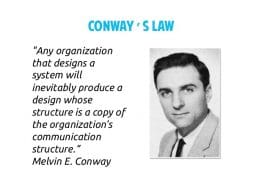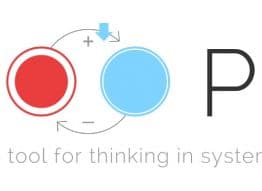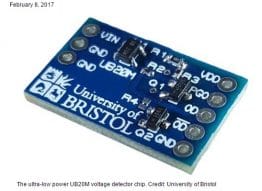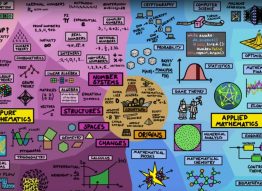Everybody loves those rare “aha moments” where you suddenly and unexpectedly solve a difficult problem or understand something that had previously perplexed you.
But until now, researchers had not had a good way to study how people actually experienced what is called “epiphany learning.”
In new research, scientists at The Ohio State University used eye-tracking and pupil dilation technology to see what happens as people figured out how to win a strategy game on a computer.
“We could see our study participants figuring out the solution through their eye movements as they considered their options,” said Ian Krajbich, co-author of the study and assistant professor of psychology and economics at Ohio State.
“We could predict they were about to have an epiphany before they even knew it was coming.”
Krajbich conducted the study with James Wei Chen, a doctoral student in economics at Ohio State. Their results were published this week in the Proceedings of the National Academy of Sciences.
Most decision-making research has focused on reinforcement learning, where people gradually adjust their behavior in response to what they learn, Chen said.
“Our work is novel in that we’re looking at this other kind of learning that really has been neglected in past research,” he said.
For the study, 59 students played a game on a computer against an unseen opponent. On the screen were 11 numbers (0 to 10) arranged in a circle (like a rotary phone, for those old enough to remember). The students chose one number and then their opponent chose a number. The details of how they won are somewhat complex (it had to be complex for them to have something to figure out), but essentially the optimal game strategy boils down to picking the lower number. Therefore, picking zero was always the best choice.
The participants played 30 times in a row, always against a new opponent. The researchers created an incentive to win by awarding small payments for each victory.
An eye-tracker sitting under the computer screen could tell what numbers they were looking at as they considered their options during parts of the experiment.
After each of the trials, participants had the option of committing to playing one number for the rest of the trials. They were encouraged to do so by the promise of an extra payment. Participants were then reminded what number they chose, what number their opponent had chosen, and whether they had won or lost.
The goal for the researchers was to see when players had that epiphany, that “aha moment,” in which they realized that zero was always the best choice and then committed to playing that number for the rest of the experiment.
The results showed that about 42 percent of players had an epiphany at some point and committed to playing zero. Another 37 percent committed to a number other that zero, suggesting they didn’t learn the right lesson. The remaining 20 percent never committed to a number.
The researchers could tell when a player had an epiphany.
“There’s a sudden change in their behavior. They are choosing other numbers and then all of a sudden they switch to choosing only zero,” Krajbich said. “That’s a hallmark of epiphany learning.”
These participants gave clues that they were about to have that aha moment, even if they didn’t realize it. The eye-tracker showed they looked at zero and other low numbers more often than others did in the trials just before their epiphany, even if they ended up choosing other numbers.
“We don’t see the epiphany in their choice of numbers, but we see it in their eyes,” Chen said. “Their attention is drawn to zero and they start testing it more and more.”
Those who had the epiphanies also spent less time looking at their opponents’ number choices and more time considering the result of each trial – whether they won or lost. The researchers said this suggests they were learning that their choice of a low number was the key to victory.
A key to epiphany learning is that it comes suddenly, which was evident when the researchers looked at eye-tracking results on the commitment screen. This was the screen where participants could choose to commit to zero (or another number) for the rest of the trials.
“Those who showed epiphany learning weren’t building up confidence over time. There was no increase in the amount of time they looked at the ‘commit’ button as they went through the trials, which would have indicated they were considering committing,” Krajbich said.
“They weren’t paying a lot of attention to the commit button until the moment they decided to commit,” Chen added.
Findings on pupil dilation provided additional evidence that epiphany learners were reacting differently than others.
“When your pupil dilates, we see that as evidence that you’re paying close attention and learning,” Krajbich said. Results showed those who experienced epiphany learning experienced significant pupil dilation while viewing the feedback screen (telling them whether they won or lost) before they made the commit decision. The dilation disappeared after they committed.
“They were showing signs of learning before they made the commitment to zero,” Krajbich said. “We didn’t see the same results for others.”
These results suggest that you have to look within to truly experience epiphany learning.
“One thing we can take away from this research is that it is better to think about a problem than to simply follow others,” Krajbich said.
“Those who paid more attention to their opponents tended to learn the wrong lesson.”
Original article here.













Leave a Reply
You must be logged in to post a comment.